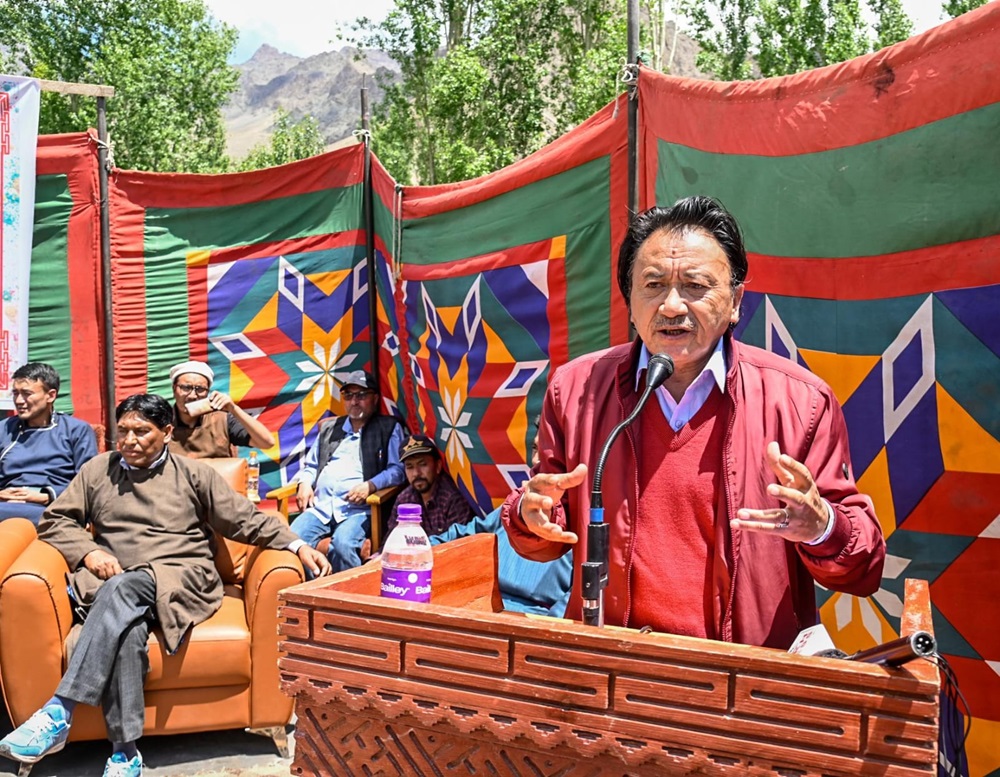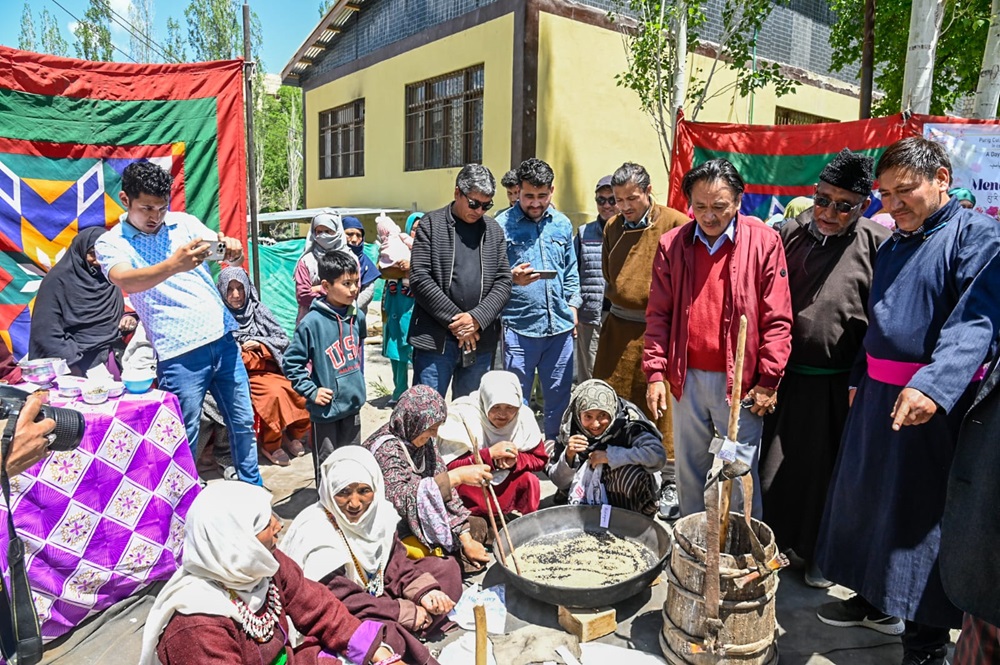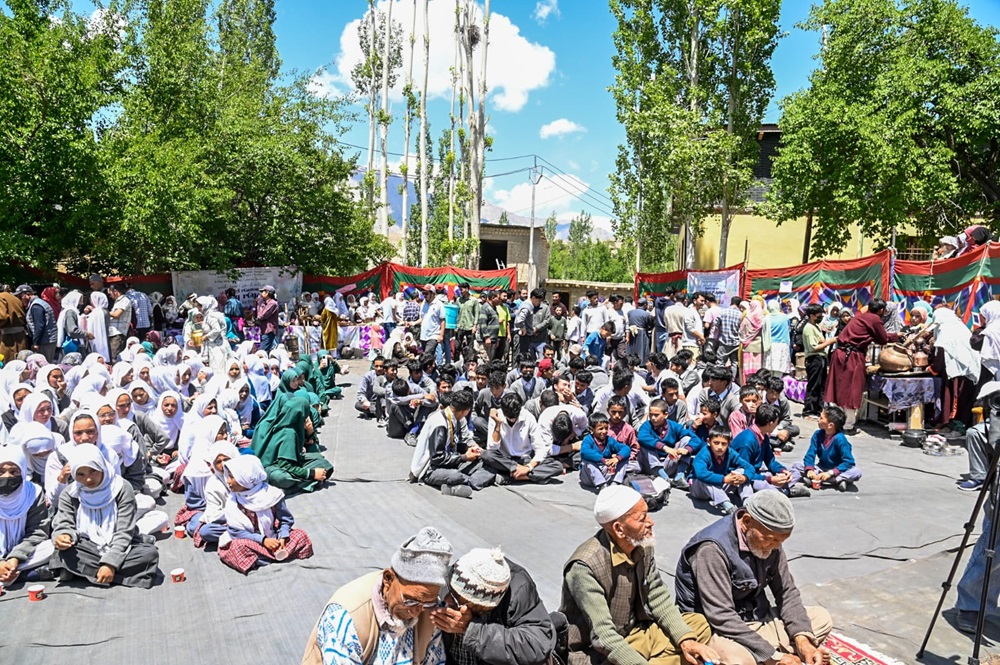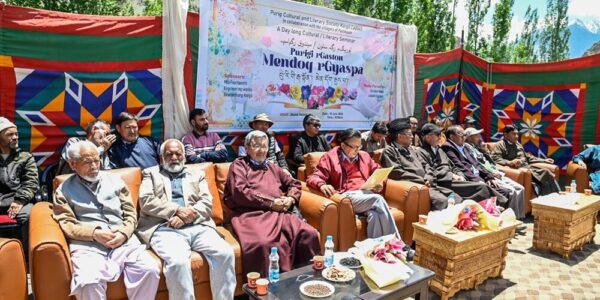A Day with the Purig Cultural and Literary Society in Kargil
The affiliation with media profession since last many years provided me the opportunity to hold the veins and gauge public sentiments on different issues. And I believe that the current young generation is much enthusiastic about reviving and preserving the local language. Sensing this curiosity among youth the Purig Cultural and Literary Society has been quenching the thrust of the Purgi speaking community. I was also wondering, how the society would contribute in reviving the culture and preserving the language. Today was kind on me to provide this opportunity to spend a day with this society for celebrating the “Mendoq rGyaspa” festival.
The literary society along with authors, poets, short story writers, researchers and theatre artists assembled to celebrate the Mindoq rGyaspa festival, one among only few festivals exclusively associated with the Purig ethnic community in Ladakh. Among the invitees were Kacho Mohd Feroz – Executive Councillor, LAHDC, Kargil, Kacho Isfindyar Khan – a prominent author who has transcripted the long folk tales of Purig, Haji Mohd Baqir Naqdoo – a seasoned poet, Mohd Issa Sabiri – the living dictionary of Purig language, Nasir-uddin Khafi – an Assistant Professor and a researcher in Purgi language and history, Haji Mohd Hussain Pashkumpa – learned senior citizen, Agha Hadi Shah, Kacho Ahmad Khan – theater artist, Haji Baqir – former Chief Education Officer and village elders; most of them in local gown – Guncha.

The society had probably purposefully chosen the historical village of Pashkum for the event which is as per historians was the first village to be settled in the region. Haji Mohd Hussain sourcing historians said that the village was first settled in around 200 BC by people from North India. Astak Paldan and Syergya Motik were the first residents living in caves at Dodo, Pashkum. These caves show signs of human habitation; one still exists, while another was lost during a road development project. He also mentioned another cave, called Malik Baho, which still exists in the village.
* Click to Follow Voice of Ladakh on WhatsApp *
Haji Hussain Pashkumpa further claims that before the Dogra invasion, the prominent stop on the Kashmir-Leh route was Pashkum. However, the Dogra army destroyed the castles across Kargil and built a castle at Qatil Gaah, which was until recently known as Khar. Following this move, Kargil became known as the headquarters of the entire region.
Early in the morning, before embarking on the day-long program, literary figures showered flowers on the graves of Sheikh Nasiruddin Pashkum, a prominent cleric of the region, and former MLA Kacho Mohd Ali Khan. This floral tribute is part of the festival custom, celebrated to honor the deceased and ancestors by placing flowers on their graves and praying for their eternal peace.
Nasir Khafi taking support of historians said that the Mindoq rGyaspa was actually a festivity of the Dard ethnicity however, this culture sustained only in the Purig region with utmost importance.
From the grave yard was a mesmerizing landscape of Pashkum village, whose soil is famous as Raltan, a fertile soil that could sprout any seed veiled in the earth.
While returning from the graveyard towards event site we passed from among the lust green fields of barley, apricot trees and old houses. Few were discussing the rGyapak, the construction of houses using clay in contrast to the current trend of using cement. They were praising the quality of Pashkum’s soil that remains strong and water resistant if used for house construction especially for walls and roof top. Contrary, using cement is not environment friendly and also cold for winters.
Few were discussing endangered Purgi words, one that catches my attention was “rgyastid” – means surrounding. One said he has not heard the word since his childhood pointing towards the dearth of vocabulary among the contemporary local generation.
On reaching the event site we saw various self-help groups from the village decorated stalls showcasing traditional foods and historical artifacts, offering attendees a glimpse into the rich culture of Kargil.
Among the artifacts were hori chamik, chatip, kumaqs (wooden purse), malchay, chukar, skya, samawar, chiks (stone used to produce apricot oil), rdung shing (to mash turnip), tukuru (used to store tobacco), rzam, bow, shing kulik (wooden lock), pumpa (rounded bowl to store water), lduru (stone bailer), zarbu (wooden chamcha), tharu (to serve paba), marluk (to store ghee), khazay, chaluk, bamba (local light), purik ge rgzomfu, kari, skuru (to woven wool), chilim, lee-mur and many others among which many were those I have seen for first time.

Among traditional foods were broo, mulaq ge taki, nakstan, lumbu, paba, popot, marzan, poli, and many others. Another woman had showcased wild herbs that are traditionally used as medicine that include, issman, rtsoo, brakspot, hkangmar, and lahor kory.
The audience was awed by the mention of heroes of Kargil who bravely fought against the Dogra invasion and sacrificed their lives. Nasir Khafi made mention of Kalon Hussain Khan, Suka Mir and Bongfo Hussain. The people of Pashkum must have pushed chests up in pride when the speaker said that Bongfo Hussain was from Pashkum who along with others spearheaded the battle against the Dogra invasion twice at Suru and Lankerchay. For a moment, the audience could feel the scenario of resistance against Dogra invasion when Abass Zameer Tumail, a short story writer narrated a short fiction over the struggle of Purig people against the infamous Dogra army.

Persisting the narrative, Haji Hussain Pashkumpa shared the story behind castles at Pashkum one of which was made for Muslim Begum. A local prince had gone to Kashmir and married a Hindu women named Ganga Rani who converted to Islam and renamed as Muslim Begum which the locals pronounce as Muslim Bekum. Habib Cho is a well known prince in Kargil’s history who built the castle at Pashkum. The famous Hlar Chay masjid’s actual name is “Hla rChiks” masjid. The name reflects towards a myth that the masjid was built by hLa.
Isfindyar Khan sings a rGyan Lhu with mention of Pashkum village. He also reflected on history of Pashkum. While Dr Mohd Ilyas reflected on history and Tamlay by Taqi Khan Nayab thrilled the audience with traditional tSod (riddle). Agha Hadi Shah chaired a poetic symposium where Khumar Tumaily, Mohd Hussain Rehnuma, Master Nissar, and other took part.
Enriching my knowledge about the language and culture from the discourse at the event and showcase of artifacts, I had thoughts that the PCLS should keep up such events at different villages so that different items and artifacts could come out in public from different villages which have different cultural styles.
1 Comments
Leave a Reply



Anything on bhoti language
How are they going to preserve their language and with which script are they going to chose